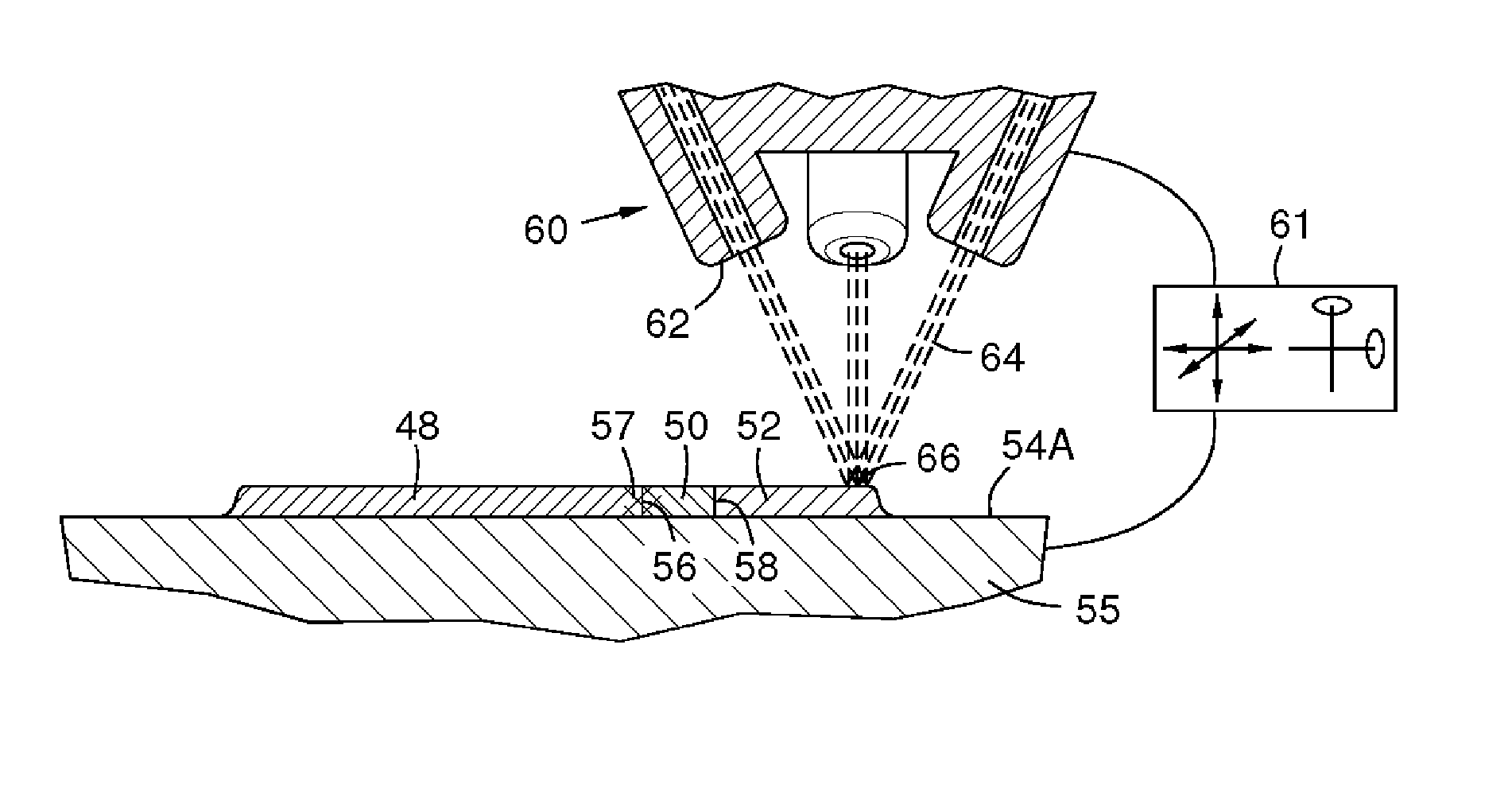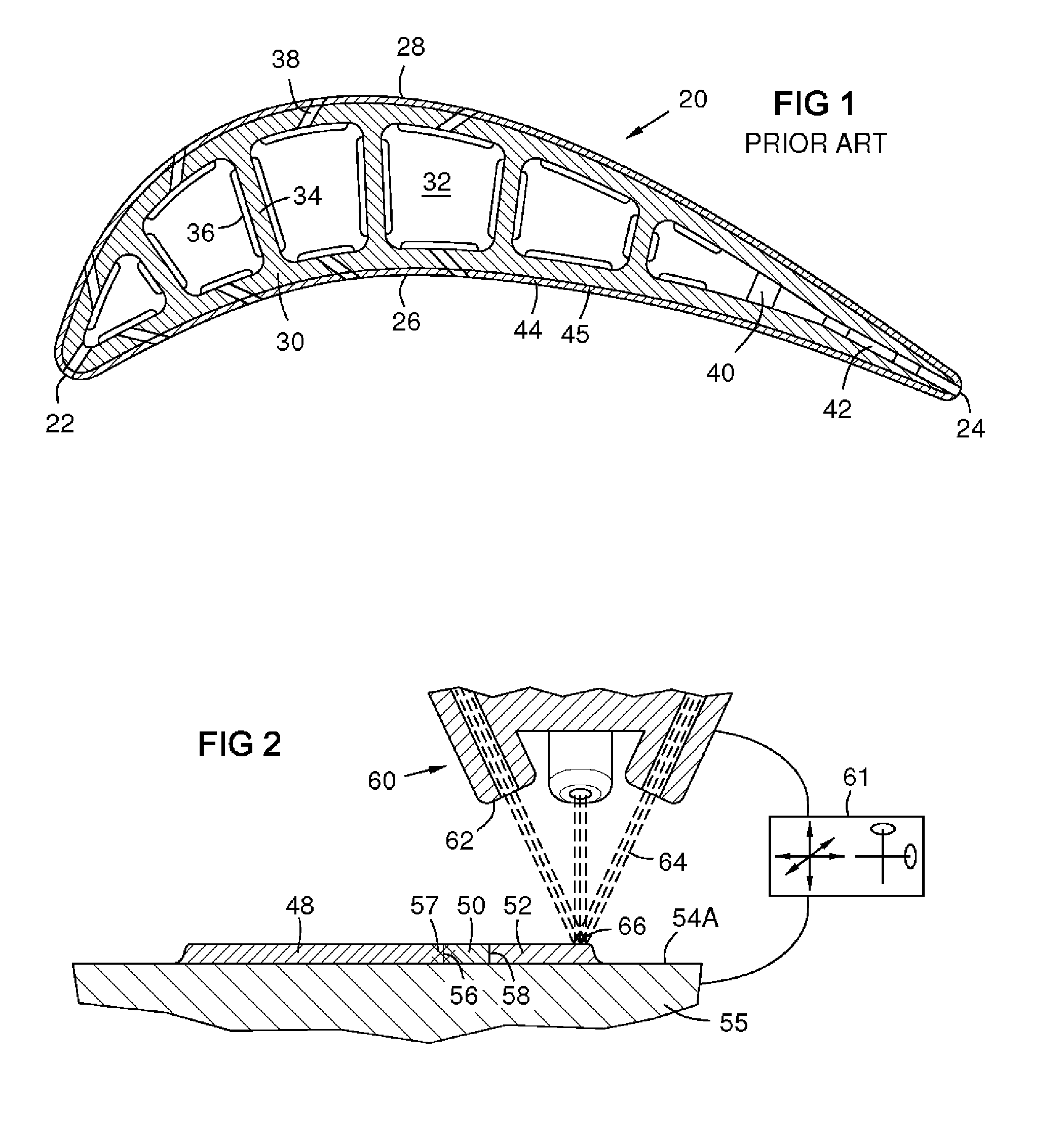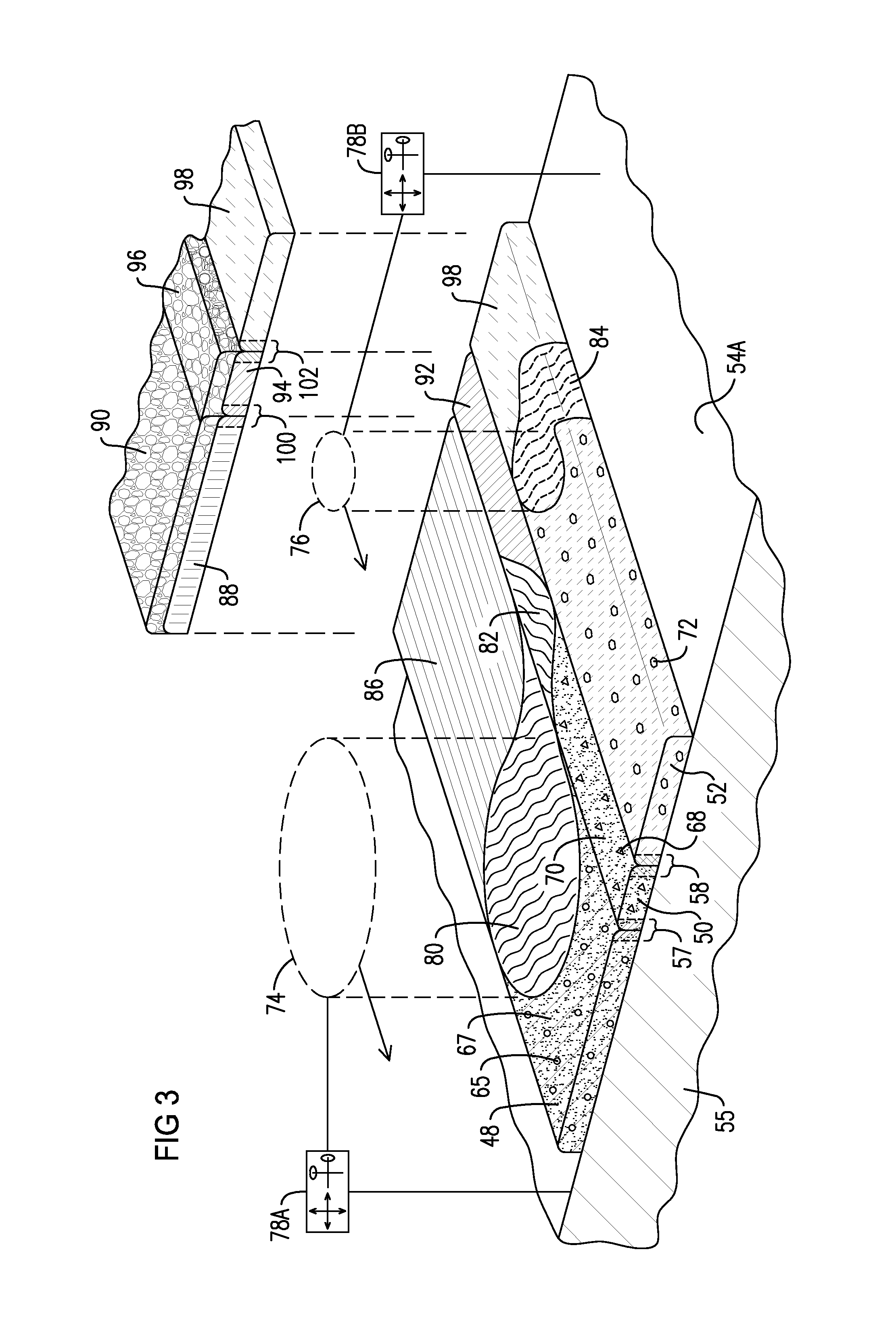Laser additive manufacture of three-dimensional components containing multiple materials formed as integrated systems
- Summary
- Abstract
- Description
- Claims
- Application Information
AI Technical Summary
Benefits of technology
Problems solved by technology
Method used
Image
Examples
Embodiment Construction
[0016]The present inventors have recognized that a need exists to discover methods and materials that enable multi-material components, such as the exemplary airfoil 20 of FIG. 1, to be fabricated using laser additive manufacturing (LAM). Ideal methods would allow respective materials of the component to be selectively placed and processed in a simple and efficient manner that avoids the chemical and mechanical imperfections described above—while ensuring adequate inter-bonding and dimensional integrity of integrated system layers in the final component. Ideal methods would also allow large-sized components to be fabricated without the need to employ rigorously air-free conditions while still minimizing unwanted chemical and mechanical imperfections.
[0017]The inventors have discovered methods for additive manufacturing multi-material components which contain dimensionally-complex, three-dimensional features including integrated systems. In these methods separate powdered materials c...
PUM
| Property | Measurement | Unit |
|---|---|---|
| Percent by mass | aaaaa | aaaaa |
| Current | aaaaa | aaaaa |
| Width | aaaaa | aaaaa |
Abstract
Description
Claims
Application Information
 Login to View More
Login to View More - R&D
- Intellectual Property
- Life Sciences
- Materials
- Tech Scout
- Unparalleled Data Quality
- Higher Quality Content
- 60% Fewer Hallucinations
Browse by: Latest US Patents, China's latest patents, Technical Efficacy Thesaurus, Application Domain, Technology Topic, Popular Technical Reports.
© 2025 PatSnap. All rights reserved.Legal|Privacy policy|Modern Slavery Act Transparency Statement|Sitemap|About US| Contact US: help@patsnap.com



